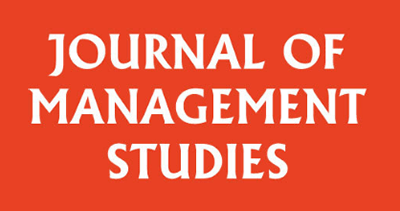
Summary
Subsidiaries are not just remote arms of headquarters. They are powered by people whose diverse backgrounds and everyday collaborations turn strategy into reality. Our review article published in the Journal of Management Studies shows how different kinds of subsidiary talent, including those assigned by headquarters and those hired locally, create value when their knowledge, skills, abilities, and other characteristics combine through daily interactions. We introduce a refined way to see talent and explain how their capabilities accumulate and integrate into organizational strengths. To understand multinational corporations (MNCs), we need to start with the people inside their subsidiaries.
Why talent in subsidiaries matters
Subsidiaries are where multinational strategies meet local realities. They must adapt quickly to local markets and cultures, navigate host-country institutions, serve customers effectively, and still stay aligned with corporate goals. Talent makes this possible. Yet prior research has been fragmented, often centered on headquarters or a single group such as expatriates. For example, while studies have extensively explored headquarters managers who transfer strategy, this focus overlooks the employees who keep subsidiaries running, such as the local staff who understand customer needs, navigate local regulations, and turn corporate plans into real performance. Our review asks: who actually works in subsidiaries, what do they contribute, and how do their efforts shape strategic outcomes?
What we studied and how
We synthesized two decades of peer-reviewed research across human resource management, international business, and strategic management. Using a subsidiary-centered lens and the model of human capital resource emergence, we connect individual attributes to unit-level results. This approach shows not only who matters, but also how individual capabilities become collective strengths inside subsidiaries.
Looking beyond old labels
The traditional categories of parent-country nationals (PCNs), host-country nationals (HCNs), and third-country nationals (TCNs) capture part of reality but overlook important nuances. We suggest adding an additional question: was the person assigned by headquarters or hired by the subsidiary? This distinction reveals groups that are common in practice but rarely studied. For example: locally hired PCNs who bridge cultures at lower cost; returned inpatriates who bring firm-specific knowledge back to the subsidiary; and self-initiated movers who contribute boundary-spanning skills. The goal is to align roles with capabilities in context, rather than to privilege one group over another.
How individuals become unit strengths
Individual knowledge, skills, abilities, and other characteristics matter because they emerge into unit-level resources through two mechanisms:
- Additive effects: when similar capabilities accumulate. For example, HCNs’ knowledge of local markets and institutions forms strong local human capital when aggregated.
- Complementarity effects: when diverse capabilities combine. For instance, a headquarters-assigned PCN’s firm-specific expertise and an HCN’s local insight together make global routines usable in local practice.
Through these patterns, four kinds of subsidiary human capital resources emerge: local, corporate, subsidiary, and international. Each type shapes different strategic outcomes, and knowing which one to develop helps leaders design staffing, training, and collaboration with intent.
What managers can use today
Design for complementarity. Pair corporate translators who understand headquarters systems with local integrators who know the market. For example, in a multinational company that aims to strengthen its overseas presence, returned inpatriates can ensure the global brand message stays consistent, while locally hired PCNs adapt it to local needs. They are natural bridges between headquarters and subsidiaries, and together they achieve faster market entry and stronger local establishment than either could alone.
Focus on the resource you need. Clarify what kind of human capital your subsidiary truly requires. If the goal is to transfer global practices, recruit people with strong corporate experience. If the aim is to drive local innovation, prioritize staff who have deep market knowledge.
Treat talent as dynamic. People move across roles and locations over time. Some return from headquarters, others settle locally long term, and many work across borders virtually. Recognizing this fluidity enables companies to redeploy talent flexibility as needs change.
Fit choices to relationships. Whether an employee is assigned by headquarters or hired locally brings different strengths and risks. In subsidiaries closely linked to headquarters, headquarters-assigned staff can enhance control and coordination. In more independent or entrepreneurial units, locally hired employees may build stronger ties with external stakeholders. The key is to match staffing choices with the type of relationship the unit needs most.

0 Comments